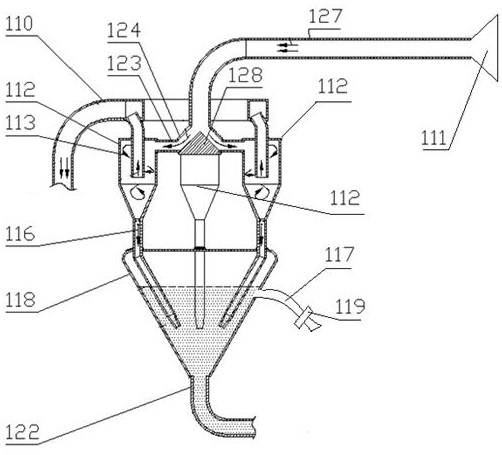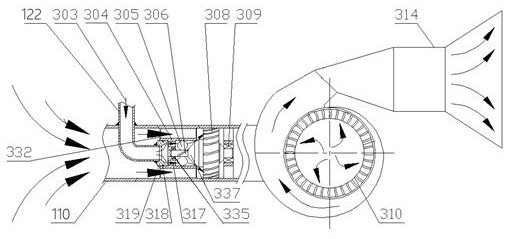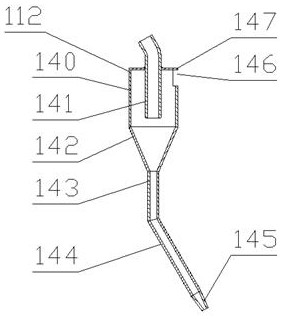Distributed multi-cyclone gas-water separation recycling device for tea fermentation
A tea fermentation and cyclone technology, which is applied in the field of tea fermentation, can solve the problems of heat waste and water mist not being recovered and recycled.
- Summary
- Abstract
- Description
- Claims
- Application Information
AI Technical Summary
Problems solved by technology
Method used
Image
Examples
Embodiment Construction
[0015] The following will clearly and completely describe the technical solutions in the embodiments of the present invention in conjunction with the embodiments of the present invention and the accompanying drawings. Obviously, the described embodiments are only some of the embodiments of the present invention, not all of them. Based on the embodiments of the present invention, all other embodiments obtained by persons of ordinary skill in the art without making creative efforts belong to the protection scope of the present invention.
[0016] Such as figure 1 , 2 As shown, a distributed multi-cyclone gas-water separation recycling device for tea fermentation includes a gas outflow pipe 110, a water mist nozzle 111, a gas-water separation cyclone 112, a water flow collection heating box 118, and a cyclone outlet water support pipe ( 116), connecting water pipe 122, water mist branch pipe 123, water mist shunt cover 124, water mist inflow pipe 127, water mist shunt cone 128, ...
PUM
 Login to View More
Login to View More Abstract
Description
Claims
Application Information
 Login to View More
Login to View More - R&D
- Intellectual Property
- Life Sciences
- Materials
- Tech Scout
- Unparalleled Data Quality
- Higher Quality Content
- 60% Fewer Hallucinations
Browse by: Latest US Patents, China's latest patents, Technical Efficacy Thesaurus, Application Domain, Technology Topic, Popular Technical Reports.
© 2025 PatSnap. All rights reserved.Legal|Privacy policy|Modern Slavery Act Transparency Statement|Sitemap|About US| Contact US: help@patsnap.com



